Hydrogeological situation on 1 April 2024
In March 2024, recharging continued for most of the aquifers and levels at 64% of observation points had risen.
The state of the aquifers was satisfactory over a large part of France, particularly that of the reactive aquifers, due to a surplus 2023-2024 recharge. The situation was unfavourable, with low to very low levels in the Sundgau aquifer (southern Alsace) and in the Languedoc and Roussillon coastal aquifers.
The recharge period should end in April or May, depending on the total amount of rainfall and on the reactivity of respective aquifers. Recharge episodes are expected to be intermittent and not particularly intense, unless exceptional rainfall episodes occur. The state of inertial aquifers is not expected to change much in the next few weeks. For reactive aquifers, changes will depend mainly on the amount of rainfall and abstractions. The situation will have to be closely monitored particularly for the Languedoc, Roussillon and Corsica coastal aquifers.

Map of aquifer levels in mainland France on 1 April 2024.
© BRGM
Groundwater trends
In 2023, the depletion period continued late in the year, due to insufficient rainfall and the fact that the vegetation was still growing at the beginning of autumn due to the warm temperatures. The recharge began at the end of October and remained very active in November and December. In January and February, it slowed across much of the country. At the end of February, there was an aquifer recharge surplus throughout the country, with the exception of the south-south-east and Corsica.
In March 2024, the recharging continued for most of the aquifers. Higher levels were recorded at 64% of observation points (as opposed to 57% in February).
The inertia of the aquifers in the Artois Basin, the Paris Basin, the Sundgau and the Rhône-Saône corridor means that it takes several weeks for rainfall to seep through the unsaturated zone. There was particularly abundant rainfall during the autumn and winter of 2023-2024, which enabled the levels in inertial aquifers to rise strongly. Recharging continued in March with generally upward trends.
Reactive aquifers revealed heterogeneous trends. Recharging was quite apparent in the Artois Basin, around the Paris Basin, in the Massif Central and in the Aquitaine Basin. In the south-south-east, aquifers benefited from very heavy rainfall from the end of February. Levels had risen sharply in the Côte d'Azur, Provence and Languedoc (in the southern Massif Central, Cévennes range and coastal areas).
Levels were stable or had fallen in areas that have received less rainfall: the north-east aquifer (in eastern Ile-de-France and the Grand-Est), the bedrock aquifer in Brittany and from Cotentin to Mayenne, the volcanic formation aquifers in the Massif Central and coastal aquifers of Corsica. The lack of rainfall in February and March in the Jura mountains and the northern Alps has affected the reactive aquifers they supply. Levels fell or remained stable in March in the Jurassic limestone aquifers of the Jura and in the alluvial aquifers of the Alps, Saône and upstream Rhône valleys. Finally, levels remained stable or had fallen in the aquifers of the Roussillon plain and the Corbières massif, as rainfall continued to be insufficient.
Comparison between 1 April 2023 and 1 April 2024
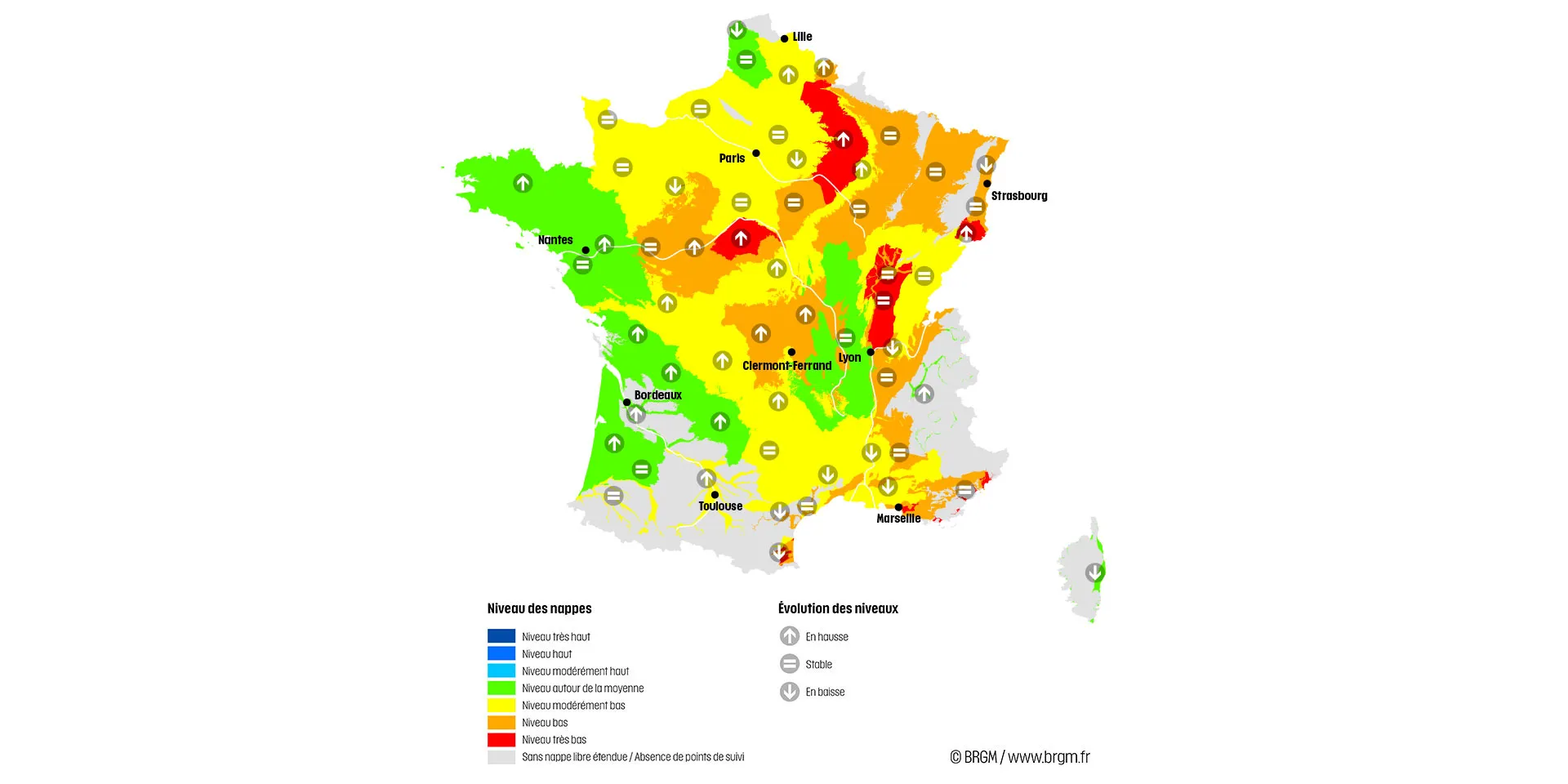
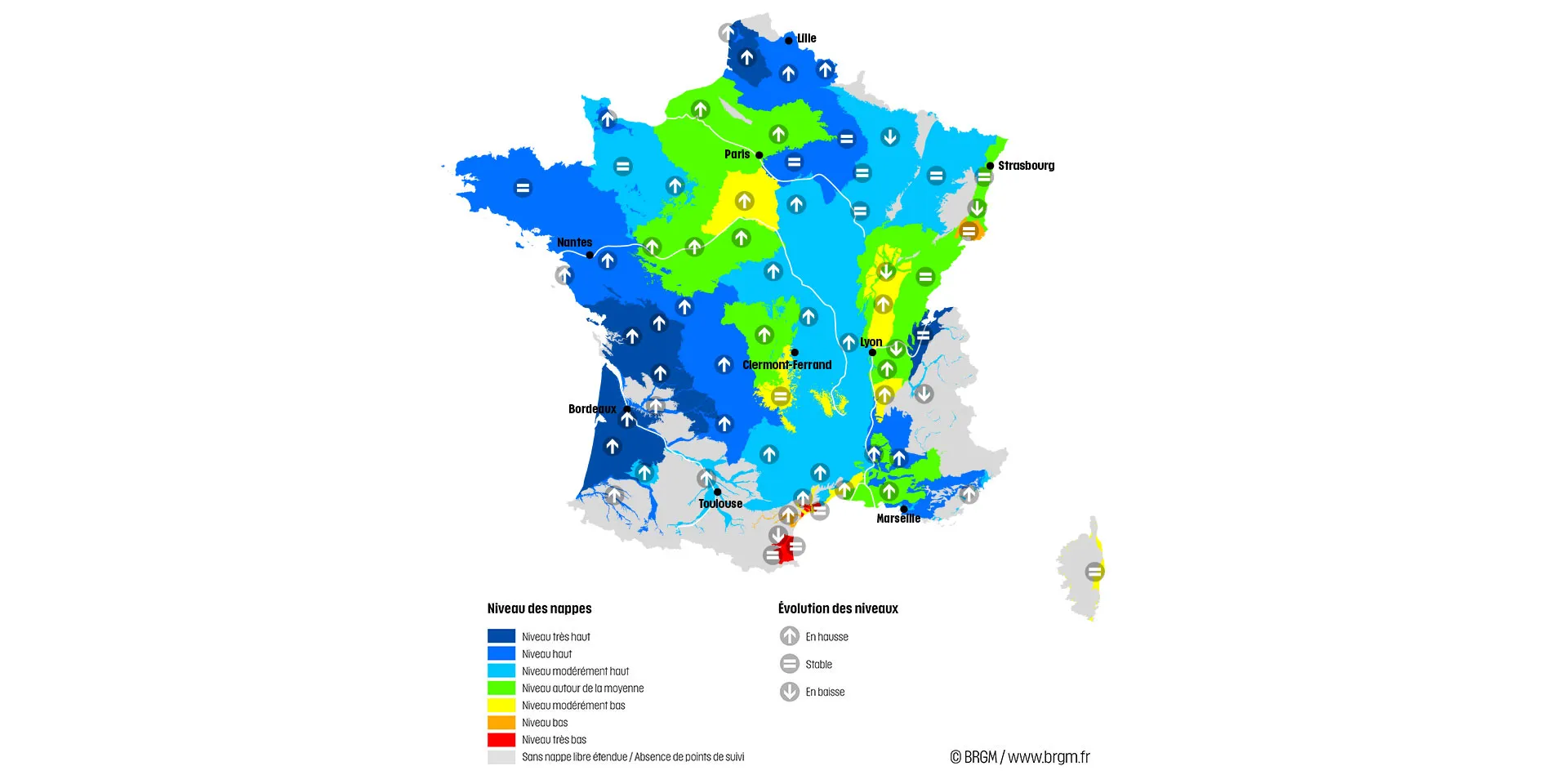
Map of France showing the state of the aquifers on 1 April 2023 (left) and 1 April 2024 (right).
© BRGM
The groundwater situation
The groundwater situation during the low-water period in 2023 was unsatisfactory, with aquifer levels being generally below normal monthly levels. The significant recharge that occurred between the end of October and December had a marked effect on the aquifers. The overall situation then improved considerably, particularly in the reactive aquifers in the northern two-thirds and south-west of France. The situation deteriorated in January, a particularly dry month, then stabilised in February, but remained satisfactory.
In March, the situation improved again compared with the previous month. The state of the aquifers was, on the whole, satisfactory: the levels recorded at 27% of the observation points were below monthly averages, 15% were comparable with monthly norms and 58% were above them (compared with 36%, 18% and 46%, respectively, in February). The situation was more positive than that observed for the previous year, in March 2023, when 75% of the levels recorded were below monthly averages. Only the aquifers along the Mediterranean coastline (in western Hérault, Aude and the Pyrénées-Orientales) remained lower than in March 2023.
The 2023-2024 recharge led to a clear surplus over almost all of France, resulting in current levels that are mostly close to or well above monthly averages. The different states of aquifers are mainly due to the intensity of the 2023-2024 recharge and to the speed with which they react to infiltrated rainfall.
The state of the inertial aquifers continues to improve gradually. The chalk aquifer in the Artois basin had high to very high levels, following a low-water level in 2023 and several significant recharge episodes since mid-October 2023. Levels in the Paris Basin are close to normal for the most inertial aquifers and high for the less inertial aquifers. The aquifers in the Beauce and the central-western part of the basin, which are highly inertial, are locally more deteriorated with moderately low to low levels. The Sundgau aquifer (in southern Alsace) remains low, due to its high inertia. Finally, the aquifers in the Rhône-Saône corridor ranged from normal to moderately low, but their states varied depending on the location. Very high levels were recorded in the Savoie foreland aquifer, following a very high recharge surplus.
In the northern two-thirds and south-west, the levels of reactive aquifers were satisfactory in March, ranging from close to normal to very high, as a result of the surplus recharge recorded from mid-October to December and then from the end of February. The state of most aquifers was better than in February. They remained stable or deteriorated slightly in areas that received little rainfall in February and March: aquifers in the Grand-Est, the Jura, the alluvial aquifers of the Rhône and Saône rivers and the central Massif Central. Groundwater levels were often less satisfactory.
Until the end of February or the beginning of March, which saw several episodes of intense rainfall across the south-east, the state of the aquifers around the Mediterranean remained unsatisfactory. The recharge in March led to a considerable improvement in the states of aquifers in the southern Massif Central, the Cévennes range, Provence and the Côte d'Azur. Levels have again risen above monthly averages, from near normal to high. Along the Languedoc coast, the March recharge was significant, but the rainfall that seeped into the ground was still insufficient to make up for the deficits of recent months. Aquifer levels are still not very satisfactory, ranging from moderately low to very low. Finally, following a lack of rainfall for almost two years, levels are still of great concern in the limestone aquifers of the Corbières massif and the Roussillon plain.
In Corsica, the states of aquifers vary, depending on the amount of rainfall they received at the end of February and in March. Aquifer levels are low to very low along the northern and eastern coasts and comparable to monthly norms to moderately high on the western coast.
Aquifers that are in a very good state
Several aquifers are in a very good state, with levels ranging from high to very high, in relation to the levels recorded for March in previous years:
- Aquifer levels in the Artois basin are the result of the recharge surpluses in 2022-2023 and 2023-2024;
- The reactive aquifers in the Armorican Massif, the western Massif Central and the Aquitaine Basin have high to very high levels, due to abundant rainfall since mid-October 2023;
- The fluvial and fluvioglacial alluvial aquifers of the Savoie foreland benefited from a much greater recharge surplus in 2023-2024;
- The karst limestone aquifers of Provence reacted strongly to the rain at the end of February and March and their levels are high.
Aquifers in a poor state
Many aquifers were in a poor state, with low to very low levels compared to those recorded in March of previous years, due to an extreme lack of rainfall over the last few months or years:
- The situation is improving very slowly in the inertial aquifers of the Sundgau Plioquaternary gravels, but levels remain low, due to several successive winter recharge deficits and their very inertial behaviour;
- Levels in the Valras-Agde Astian sands aquifers are very low, with insufficient rainfall in January and March 2024 to compensate for the deficits accumulated over the last three years.
The state of the multi-layer aquifer in Roussillon and the karst limestone aquifers in the Corbières massif remain extremely poor, with very low levels, due to a lack of rainfall for more than a year. Certain observation points have recorded steadily-falling levels since May 2022, with historic lows being registered.
How do aquifers fill up and how do they empty?
Groundwater levels vary throughout the year, from high levels in winter (when vegetation does not absorb rainwater) to low levels in summer (the traditional depletion period).
The fate of rainfall varies greatly depending on the time of year and the condition of the ground surface on which it falls. Usually, the groundwater-recharge period takes place from early autumn (September-October) to early spring (March-April), a six-month period during which vegetation is dormant (with low evapotranspiration) and rainfall is generally more abundant. If the winter is dry, groundwater recharge is very low.
From spring through summer, rising temperatures coupled with the regrowth of vegetation and thus increased evapotranspiration, limit the infiltration of rainfall into aquifers. Between May and October, unless there are exceptional rainfall episodes, aquifer depletion usually continues and levels will keep decreasing until the autumn.
Why do some aquifers recharge faster than others?
Groundwater flows at different rates depending on the porosity (percentage of gaps/cracks in the rock) and permeability (capacity to allow water to circulate, i.e. interconnectivity between these gaps/cracks) of the aquifers. The larger the gaps and the more interconnected they are, the faster the water will flow, for both refilling and depletion.
It takes a given volume of water different periods of time to travel the same distance, depending on the kind of rock formation:
- a few years in a porous formation,
- a few months in a cracked formation,
- and a few days, or even a few hours, in a karst formation.
Inertial and reactive aquifers: what are they?
The impact of the winter recharge varies according to the cyclic nature of the aquifer, i.e., its reactivity to rainfall infiltration.
We refer to aquifers that are:
- reactive (when they are composed of sand, gravel, karst limestone or weathered granite formations). These aquifers are characterised by their rapid reaction times: they can recharge during heavy summer rainfall, but are also highly sensitive to drought. Their levels can therefore vary very quickly over the course of the same season.
- inertial (when composed of chalk, non-karst limestone, sandstone formations). Their reaction times are slow. They can have multi-annual cycles, meaning that they require a long period to recharge or empty.

Cyclicity of aquifers in mainland France.
© BRGM
Forecasts
The Météo-France seasonal forecasts for April, May and June 2024 predict higher temperatures across the whole of France. No clear rainfall scenario has emerged. Several low-pressure systems have been observed and are still expected in April 2024. However, from April on, the rise in temperatures, vegetation growth and hence the increase in evapotranspiration will clearly reduce the amount of rainfall that seeps through to the aquifers. The 2023-2024 recharging period should be ending shortly.
The inertial aquifers (Artois Basin, Paris Basin, southern Alsace and the Rhône-Saône corridor) take a long time to respond to effective rainfall. The rise in water levels is expected to continue for a few weeks after the rain stops seeping deeper into the ground. Thanks to March rains, levels should stay high in April. Trends are expected to stabilise, with depletion likely to begin in May and continue until autumn, barring exceptional rainfall events.
The state of the inertial aquifers should continue to improve very slowly between now and the end of the recharge period and then gradually deteriorate during the depletion period. Levels close to or above normal were observed in early spring in a large proportion of the inertial aquifers. However, some sectors could find themselves under pressure during the summer, due to contrasting local situations or heavy demand for water. The Plioquaternary aquifers of the Sundgau, the Saône corridor (Dijonnais, Bresse and Dombes) and the Miocene molasse aquifer of the Bas-Dauphiné should remain below monthly norms throughout the spring and summer.
In reactive aquifers, the April trends will depend on the total rainfall and vegetation growth. The spring snowmelt will also affect aquifers in the Pyrenees and Alps.
Recharging of the reactive aquifers will only continue to improve the situation or maintain their levels if there are major rainfall events. It should be noted that spring rains might postpone the start of the depletion period for reactive aquifers and avoiding excessive use of groundwater, particularly for irrigation.
If there is insufficient rainfall, depletion of the reactive aquifers should begin in April. As a result, the situation is likely to deteriorate, all the more rapidly to the extent that aquifers are reactive. If there is no rain and with high temperatures, the early start of irrigation campaigns could also affect the state of the aquifers.
Reactive-aquifer levels should remain satisfactory in April, unless there are significant rainfall deficits. Along the western Mediterranean coastline (particularly in Aude and the Pyrénées-Orientales), any rain that might fall should have little impact. It is highly unlikely that the volumes of water infiltrated during the spring will compensate for the deficits accumulated since 2022.
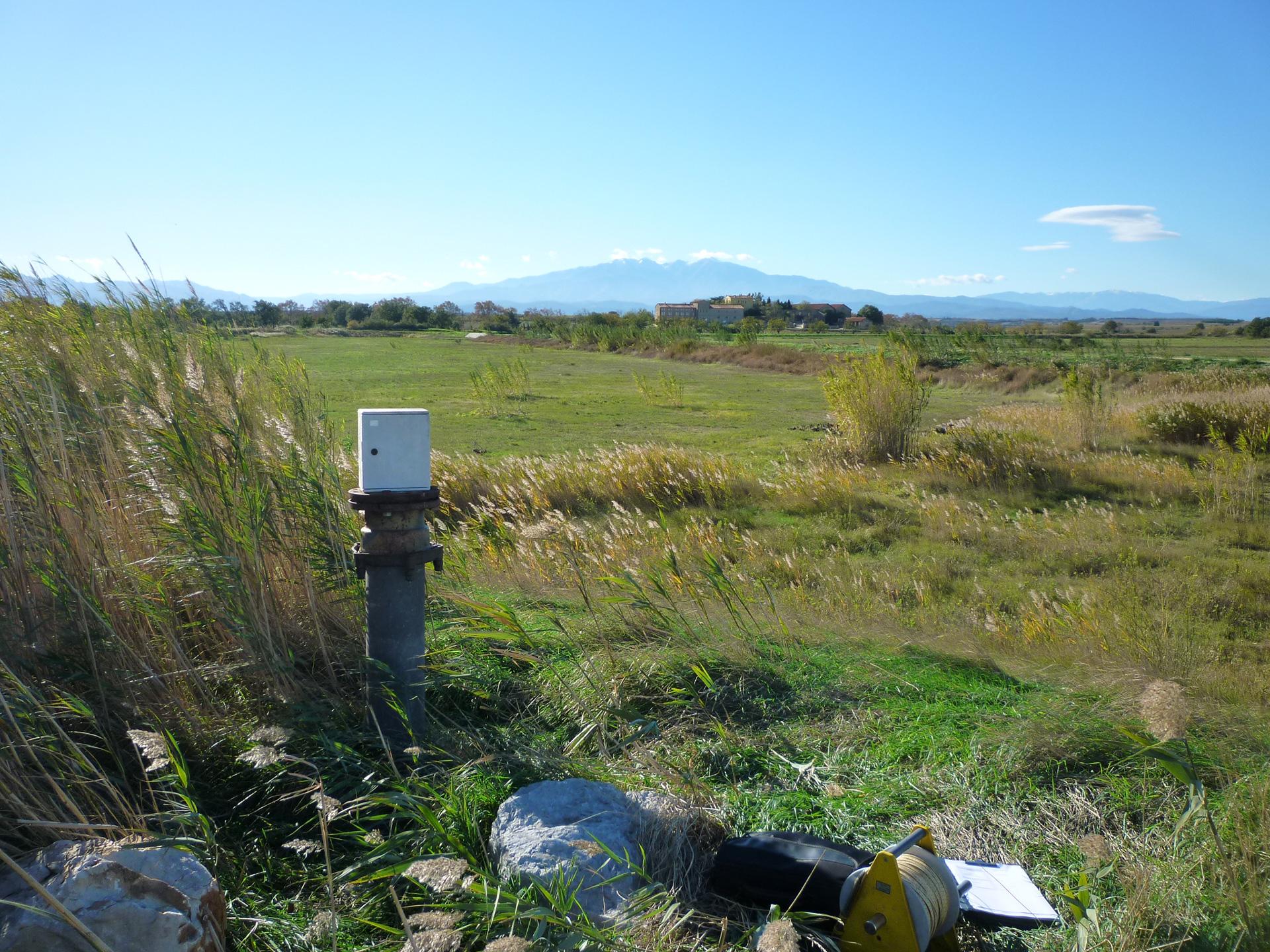
State of groundwater: monitoring by BRGM
Groundwater is a widely used resource: in metropolitan France, it accounts for nearly two-thirds of drinking water consumption and more than one-third of agricultural water consumption. It is also widely used in the industrial sector. Groundwater tables depend on cyclical recharges.
BRGM monitors groundwater levels and quality in mainland France. Discover the actions carried out by the French geological survey and the resources and databases available on groundwater in France.
Press contact


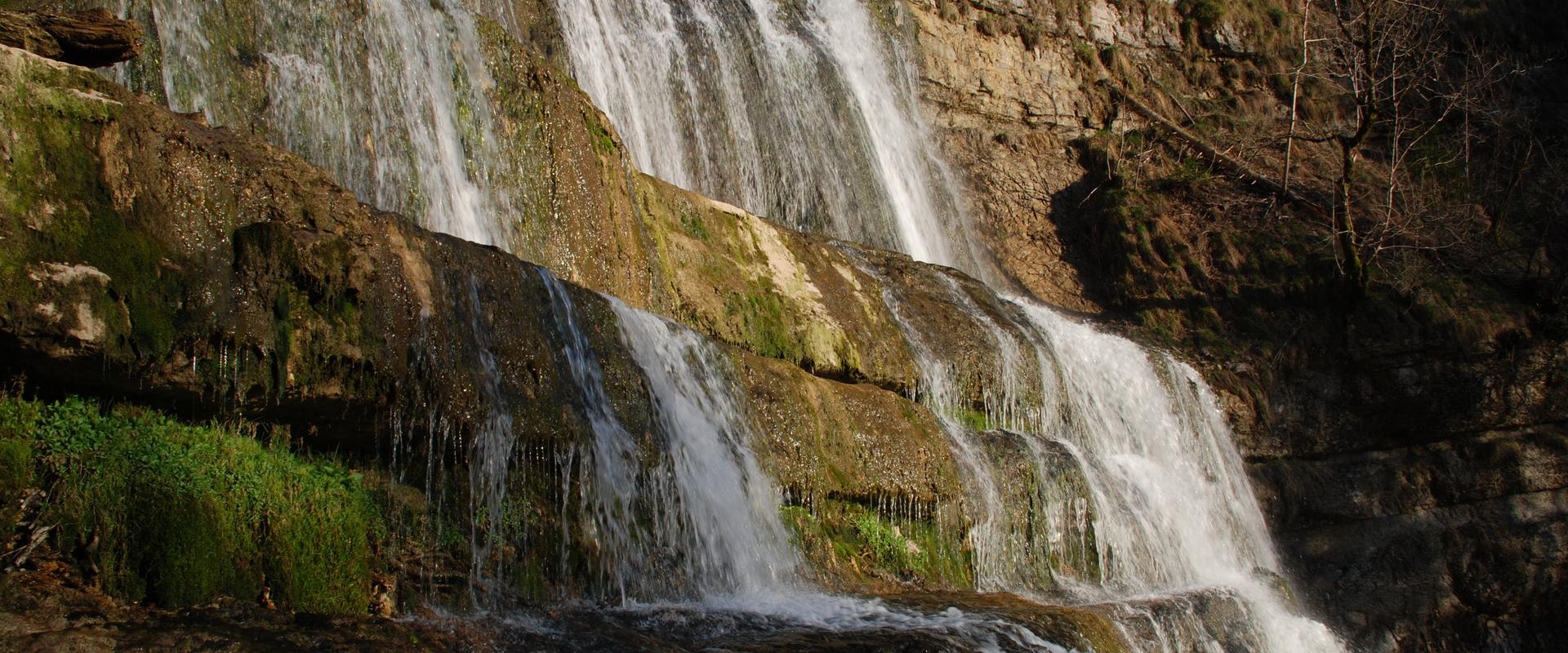
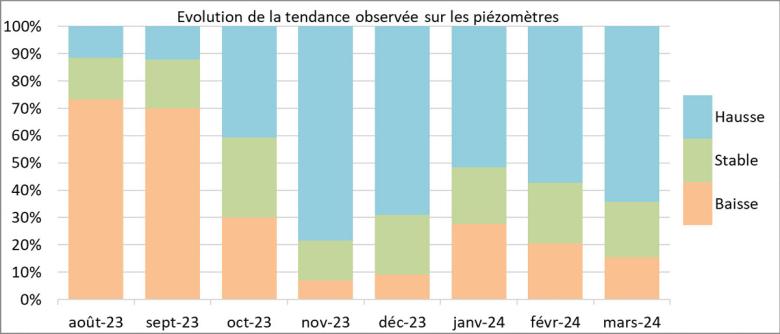
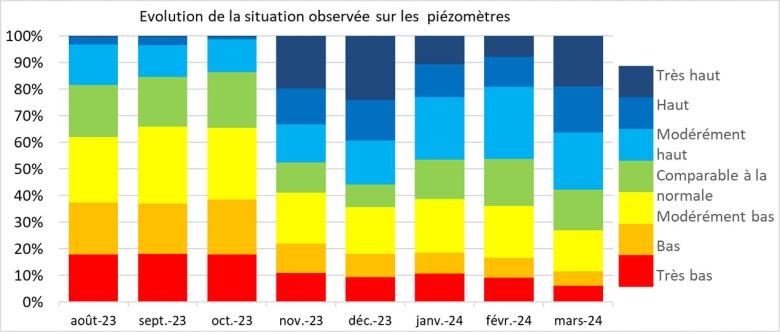




Map drawn up by BRGM on 10 April 2024, based on data from the ADES database, acquired up to 31 March 2024. Data source: ADES database (ades.eaufrance.fr) / Hydroportail (hydro.eaufrance.fr) / Background map © IGN. Data producers and contributors: APRONA, BRGM, Conseil Départemental de la Vendée, Conseil Départemental des Landes, Conseil Départemental du Lot, EPTB Vistre Vistrenque, Parc Naturel Régional des Grandes Causses, Syndicat Mixte d'Etudes et de Travaux de l'Astien (SMETA), Syndicat Mixte pour la protection et la gestion des nappes souterraines de la plaine du Roussillon (SMNPR).
This map shows the global indicators reflecting the average fluctuations of the aquifers. They are based on point indicators collected at groundwater monitoring points (by means of piezometers).
The "Aquifer levels" indicator compares the current month’s figures with those of the same months in the entire record, i.e. at least 15 years of data and sometimes up to as much as 100 years of data. It is divided into 7 classes, from the lowest level (in red) to the highest (in dark blue).
The grey areas correspond to areas without unconfined aquifers, i.e. with an impermeable or semi-permeable layer above the aquifer, and/or sectors with a very low density of measuring points. This last case primarily concerns mountainous areas with small, heterogeneous aquifers.
The "Evolution of levels" indicator reflects the variation of the water level of the past month compared to the two previous months (stable, increasing or decreasing).
These global indicators reflect general situations and trends and do not take into account possible local disparities.